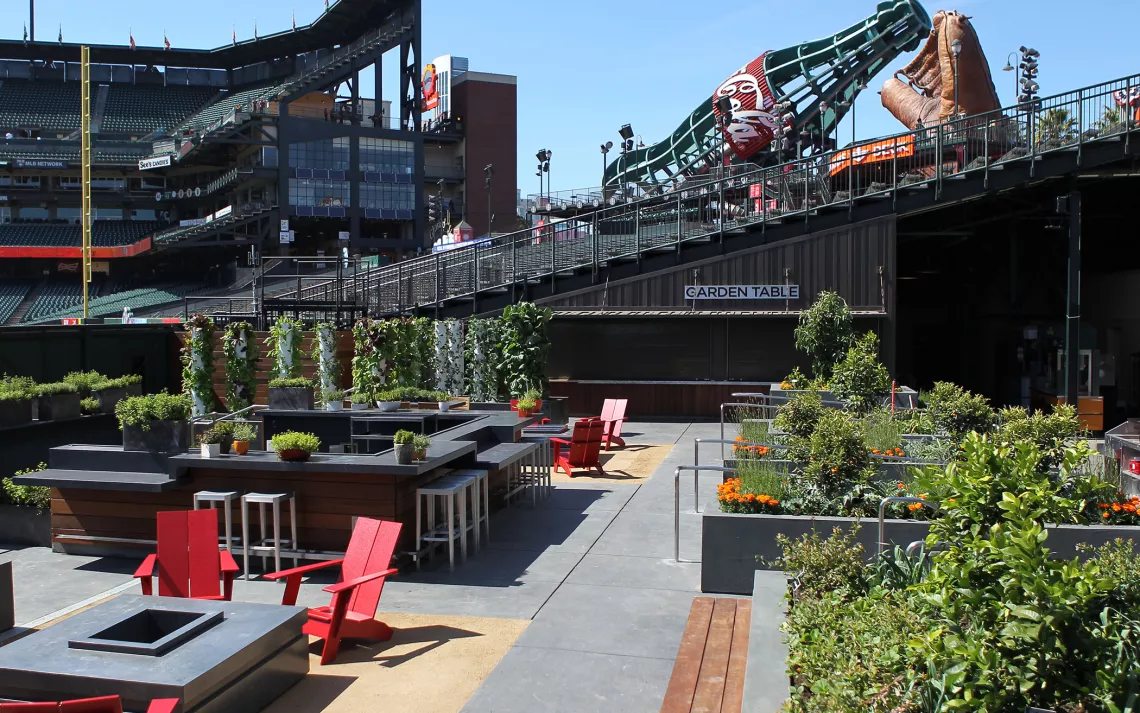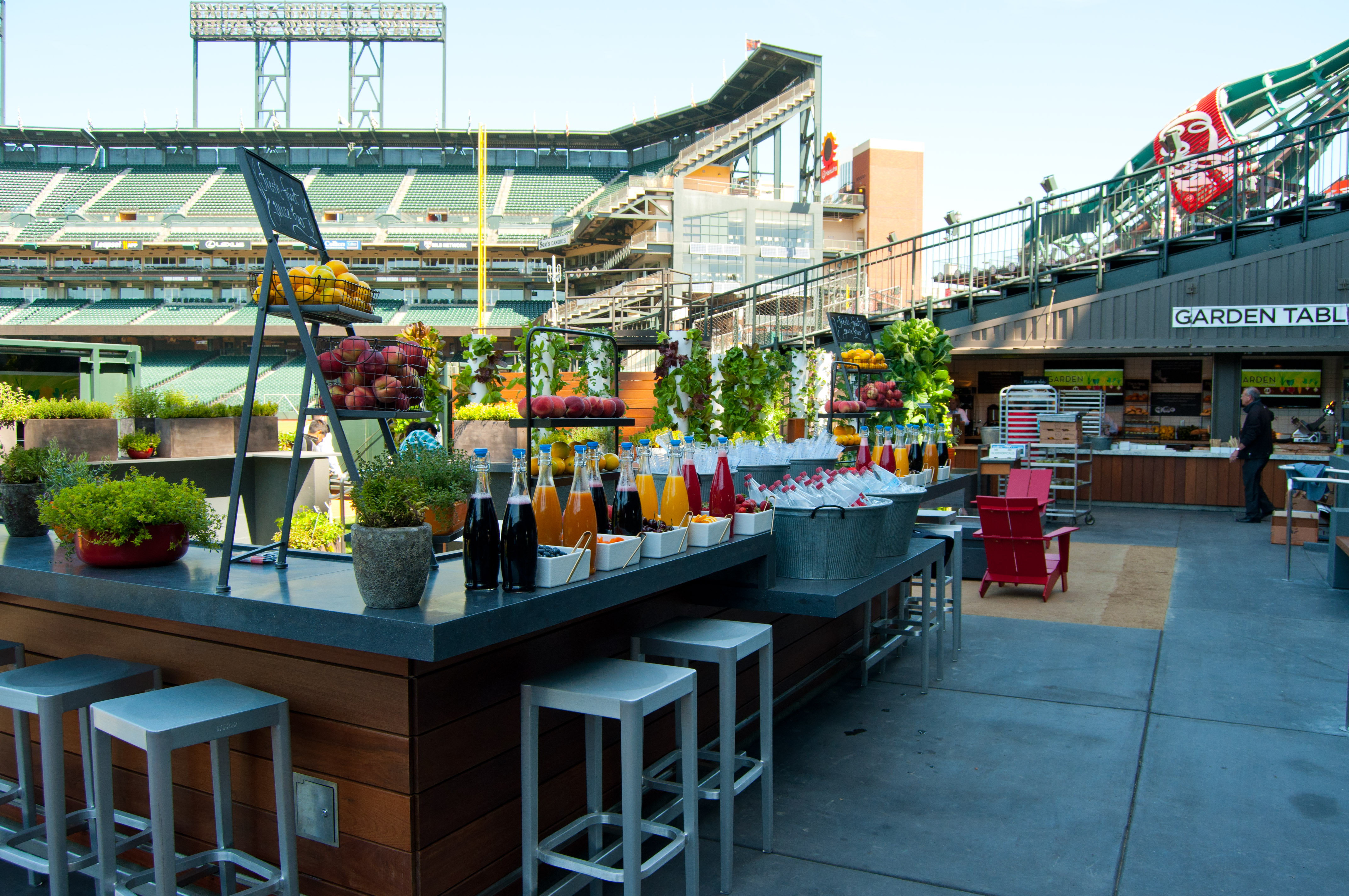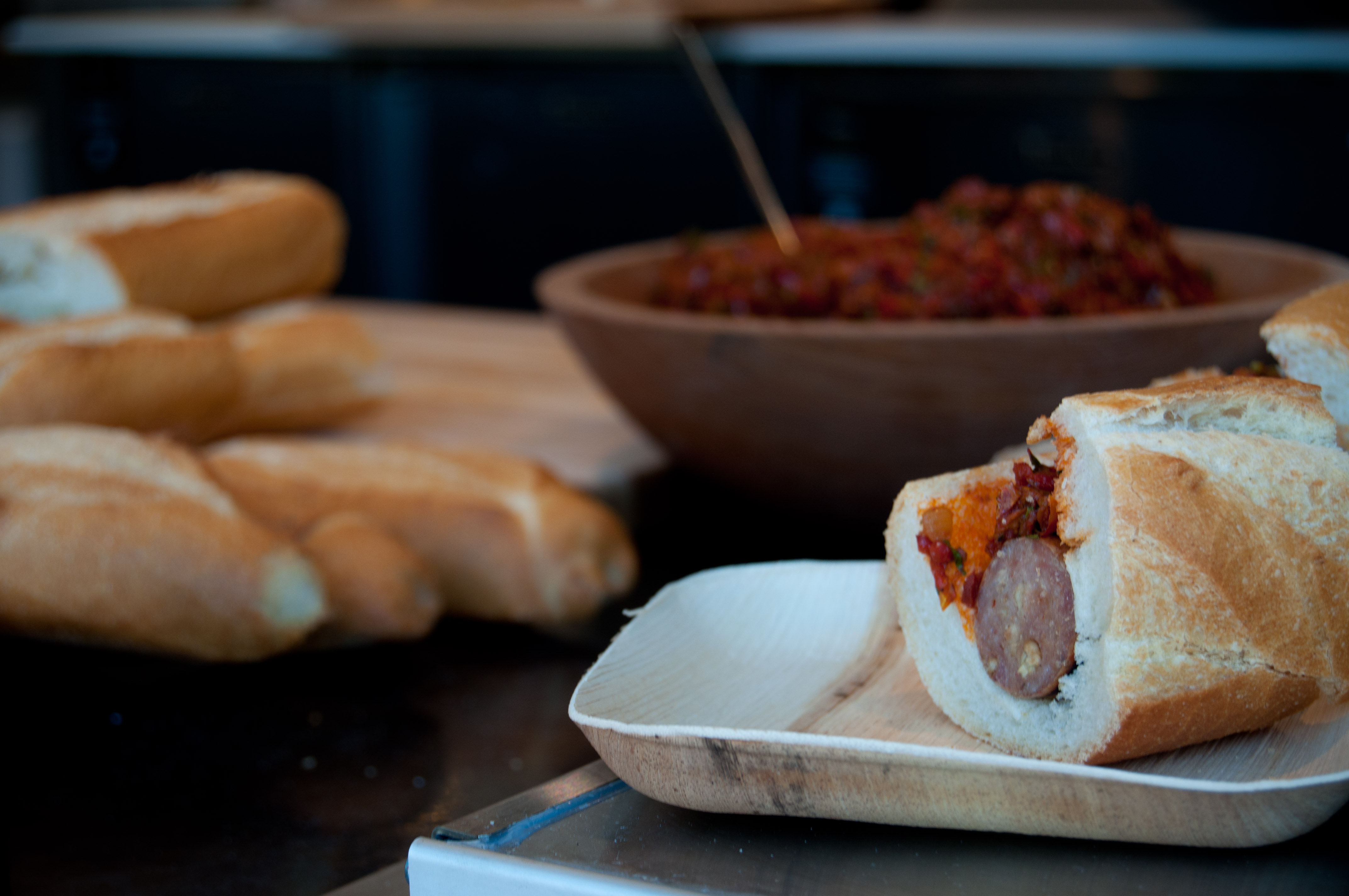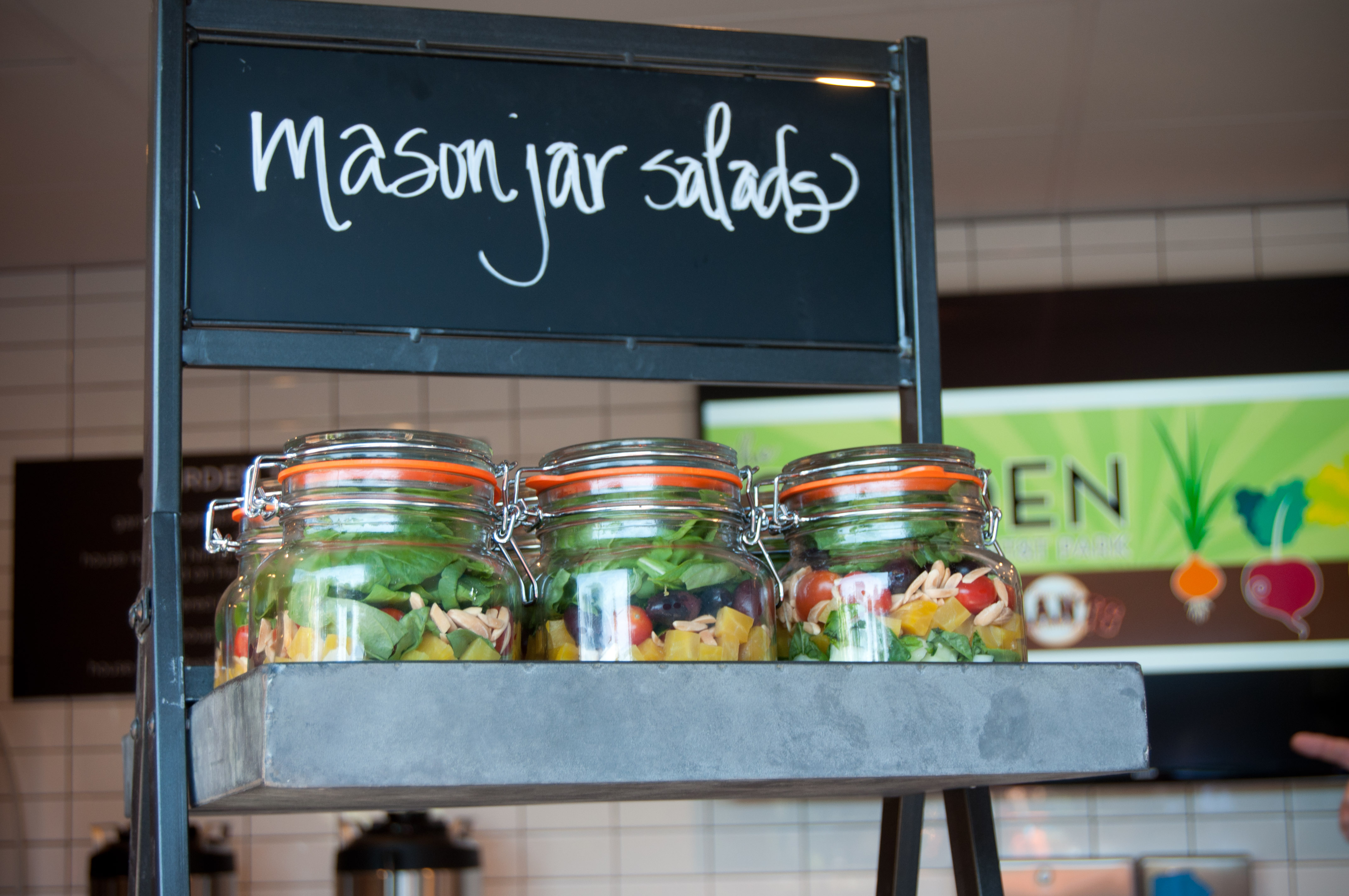Growing, Growing, Gone: Urban Farming Hits the Big Leagues
Stadium food has a new flavor at the first urban garden in pro sports.

The air is starting to get crisp. The usual hallmarks of autumn are emerging for their moment in the waning sun. With the natural splendor of fall comes the athletic spectacle of playoff baseball. This year, the race for the World Series will magnify an innovation in how we think about “stadium food.”
With two recent world championships in the bank, the San Francisco Giants know about on-field leadership. That excellence has taken on a new form, not on the field but about as close as you can get. AT&T Park, the Giants’ home, recently unveiled a novel feature that is a first in professional sports. It’s a simple enough idea: the team installed a 4,320 square-foot vegetable garden behind the outfield wall in center field. Every major league stadium features an empty space behind the center field wall. These “batter’s eyes” prevent a pitched ball from being lost in the sea of people sitting in the outfield bleachers. Generally, these spaces either serve as storage, closed to the public, or as concourses where fans can mill around among concession stands and bathrooms. AT&T’s batter’s eye formerly featured a souvenir stand and a speed-pitch booth, harmless if not terribly beneficial amenities. The Giants perceived an opportunity to further distinguish their acclaimed ballpark while also blazing a trail for sustainability in sports. Whether intentional or not, the Giants, in effect, opened the world’s most conspicuous urban garden.

If not the most conspicuous, the AT&T Park garden stands to be among the most consumed urban gardens in the nation. The Giants routinely top 40,000 fans per game and currently boast the longest streak of sellouts in the big leagues at over 300 consecutive games. That’s a lot of fans, and it stands to reason most of them will want to eat while they enjoy the game. Now, hot dogs and peanuts still reign supreme in the land of ballpark food, but that’s no reason not to expand the menu. The garden produces a wide swath of fruits and vegetable including blueberries, strawberries, avocados, tomatoes, peppers, squash, lettuces, lemons, watercress, kale and lemongrass. For the carnivores out there, the garden does not just serve rabbit food. Sausages and meat sandwiches will be available alongside a juice and smoothie bar. Produce from the garden is picked and prepared only a few paces from where it grew, and supplies concession stands throughout the stadium. In other words, this is the best locavore food option in all of professional sports, and perhaps entertainment in general.

Another postseason appearance for the Giants means these healthy snacks could be available for up to another month. Playoff sports always bring increased attention to the competing teams, and that means a brighter spotlight for this major league marvel. But what about the offseason? It won’t go to cobwebs, that’s for sure. San Francisco’s mild climate ensures that the garden can produce nearly year round. An attached sod farm will supply the ball field’s grass through the winter. The garden will also host a variety of youth groups in an effort to ensure future generations know the importance of healthy eating habits. Mason jar salads are a tough sell compared to nachos, but it’s easier to value health if you start at an early age.

The garden at AT&T represents a step in the right direction. It is proactive, progressive thinking manifested in one of America’s most popular and public industries. Hopefully, this is just the first of many innovations that emphasize health and sustainability in sports.
Follow Sierra on Facebook, Twitter, Pinterest, Instagram, and YouTube.
 The Magazine of The Sierra Club
The Magazine of The Sierra Club







